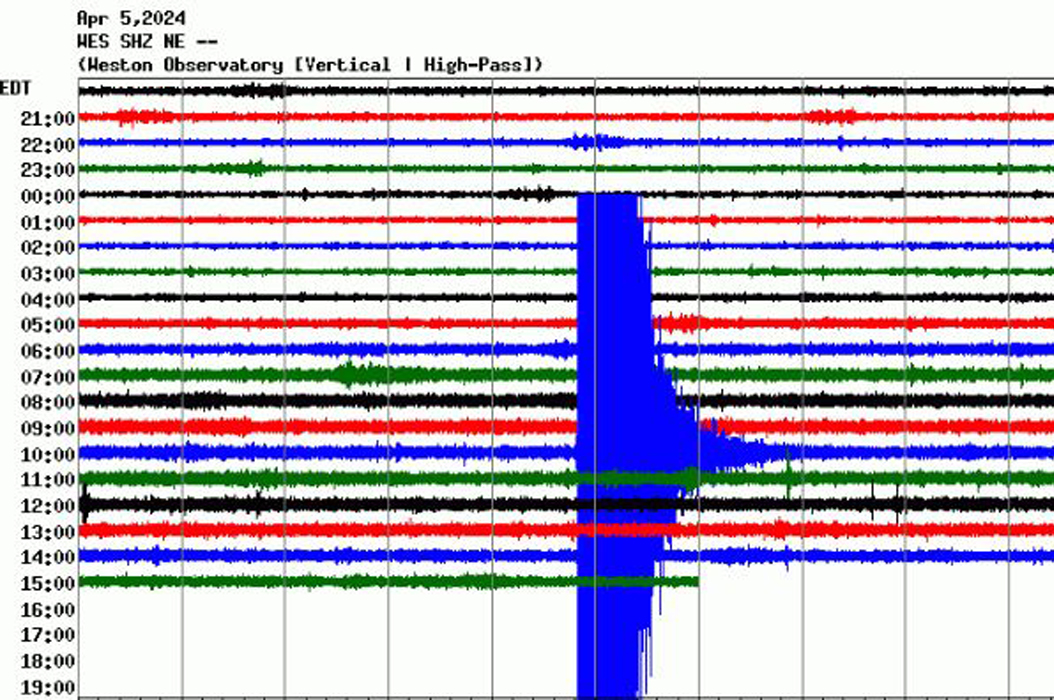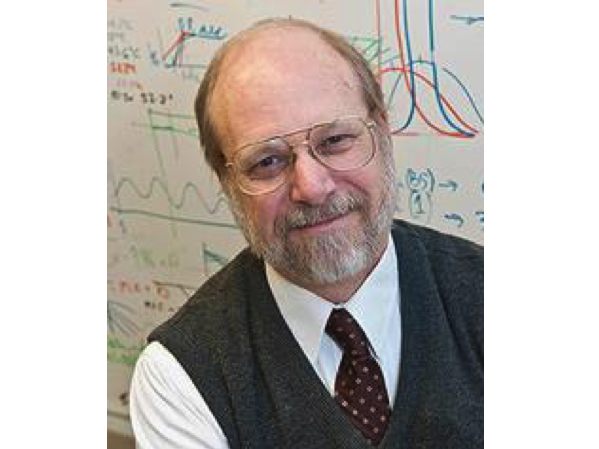
Tracking the earthquake
When a 4.8 magnitude earthquake, whose epicenter was in Lebanon, N.J., struck at 10:23 a.m. EDT on April 5, tremors spread throughout New York City, Boston, Philadelphia, and as far south as Baltimore. The temblor also launched the team at Boston College’s Weston Observatory into action—not sheltering under a sturdy table, but responding to a tsunami of inquiries from news media ranging from CNN to Fox News.
“Educating the public about the threat of future earthquakes in our part of the world is an important part of the work of earthquake seismologists,” said geophysicist John E. Ebel, a professor of Earth and Environmental Sciences and the senior research scientist at the Observatory.
“Because strong earthquakes are infrequent, especially in the memories of most people, we need to take every opportunity to educate the public about the earthquake hazard," he said. “This New Jersey earthquake gave us an opportunity to inform the many people in large, East Coast cities that damaging earthquakes have occurred in the past, and there is every reason to believe that they will again, at some point in the future."

BC geophysicist John Ebel
How often do New England residents feel an earthquake?
“On average, earthquakes are felt in the New England region maybe three, five, six times per year," Ebel told the Boston Globe. "Then you add in New Jersey and New York state and into eastern Pennsylvania, and there’s probably another one or two earthquakes felt in those regions. Usually, they’re small—magnitude 1.5 to 2.5. Once a year, maybe a magnitude 3 or a little bit larger. This is like a once-in-20-year type of earthquake," he said of the April 5 event.
According to the U.S. Geological Survey, the earthquake was one of the strongest recorded in the Northeast in over a decade; mercifully, there were no immediate reports of major injuries or damage.
Ebel, author of the 2019 book, New England Earthquakes: The Surprising History of Earthquakes in the Northeast, told the Globe that people living in the epicentral area of northern New Jersey would likely feel aftershocks in the days following the earthquake.
His prediction was on the mark: The strongest aftershock to date was just before 6 p.m. on Friday—3.8 magnitude near Gladstone, N.J.—as more tremors continued to rattle New Jersey on Saturday afternoon and evening, bringing the two-day total to 34.
Earthquakes tend to be felt across wider distances on the East Coast because rock formations are denser than those on the West Coast, causing the vibrations and shuddering to easily transfer across hundreds of miles, noted Ebel.
Following the intial April 5 quake, Ebel fielded most of the media inquiries, while Earth and Environmental Science Professor and Observatory Director Mark D. Behn pitched in, and Marilyn Bibeau, the unit’s administrator, coordinated the onslaught of media and consumer calls, emails, and texts.
The day, said Ebel in an interview with Boston‘s NBC 10, "was exciting, and insane, all at the same time."
